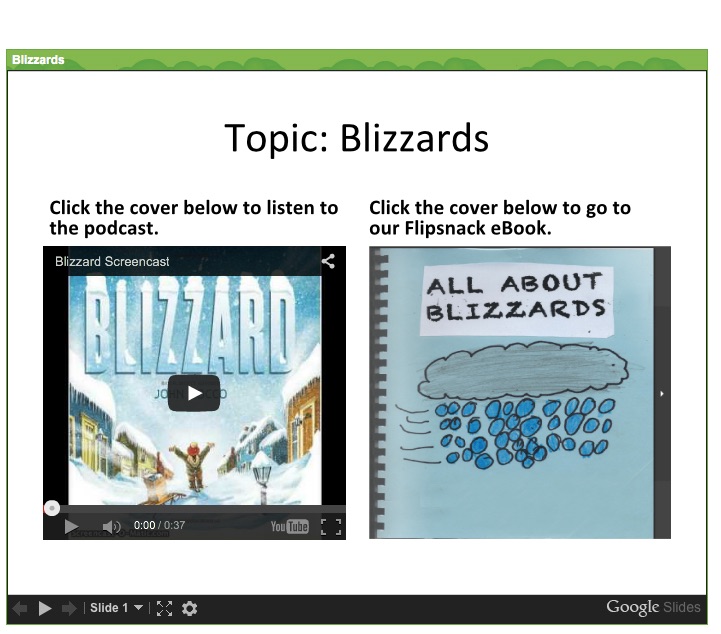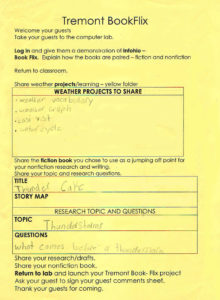Chapter 3: Finding The Balance: Pairing NonFiction and Realistic Fiction
3.9 Reaching Our Destination: Time To Share And Celebrate

A unit of study, like this one, sometimes takes on a life of its own. Momentum builds and every day brings new resources, new ideas, and more chances to “get it right.” That is why timelines are so important – even if we find it hard to adhere to them. I planned a sharing event to help us bring our project to a close. The students created story maps to showcase the realistic fiction book that prompted their research, and the finished student-authored nonfiction books were laminated and bound. Our fiction and nonfiction pairings were ready to share. Our media specialist helped us take our project to the next step. Using a digital program she converted the students’ nonfiction books into eBooks. In addition, th
e students created a podcast of the story maps of the fiction book that were then paired with the eBook. Our vision became a reality. Not only could we share the paper editions with our classmates, friends, and family members, our work was now available for a much broader audience on the school website.
It is 7:45am on a spring morning in the second grade hallway. Young writers arrive with families in tow. Zoe is holding tight to her little sister’s hand as her dad follows behind carrying backpacks and lunch boxes. It is the BookFlix launch party. After months of work, my second grade auth
ors are eager to unveil the nonfiction books they’ve created. Zoe pulls her yellow hosting sheet from her neatly organized pile of books and folders. She stands up the book, Thundercake, so it holds a prominent place on the round table. Carefully, in front of that book she places the treasure she is ready to share, her nonfiction book, Flash, Boom! A Book About Thunderstorms. Moments from now, she will take her dad and sister and lead them to the computer lab just down the hall to share the eBook versions of this pairing. Zoe is a writer, a researcher, and a published author. She is beaming, proud of what she accomplished.
Zoe and her classmates were successful in their efforts to write nonfiction texts because of the access they had to mentor texts, mini-lessons, and the time and space to write for a purpose. I immersed these young writers in the content and vocabulary, provided hands-on experiences, and offered opportunities to gather facts, sketch, record observations and collect data. But as importantly, I shared high quality children’s boo
ks, both fiction and nonfiction, to infom and extend my students’ understanding and knowledge. As I shared these book gems with my students, they, in turn, produced treasures of their own.
